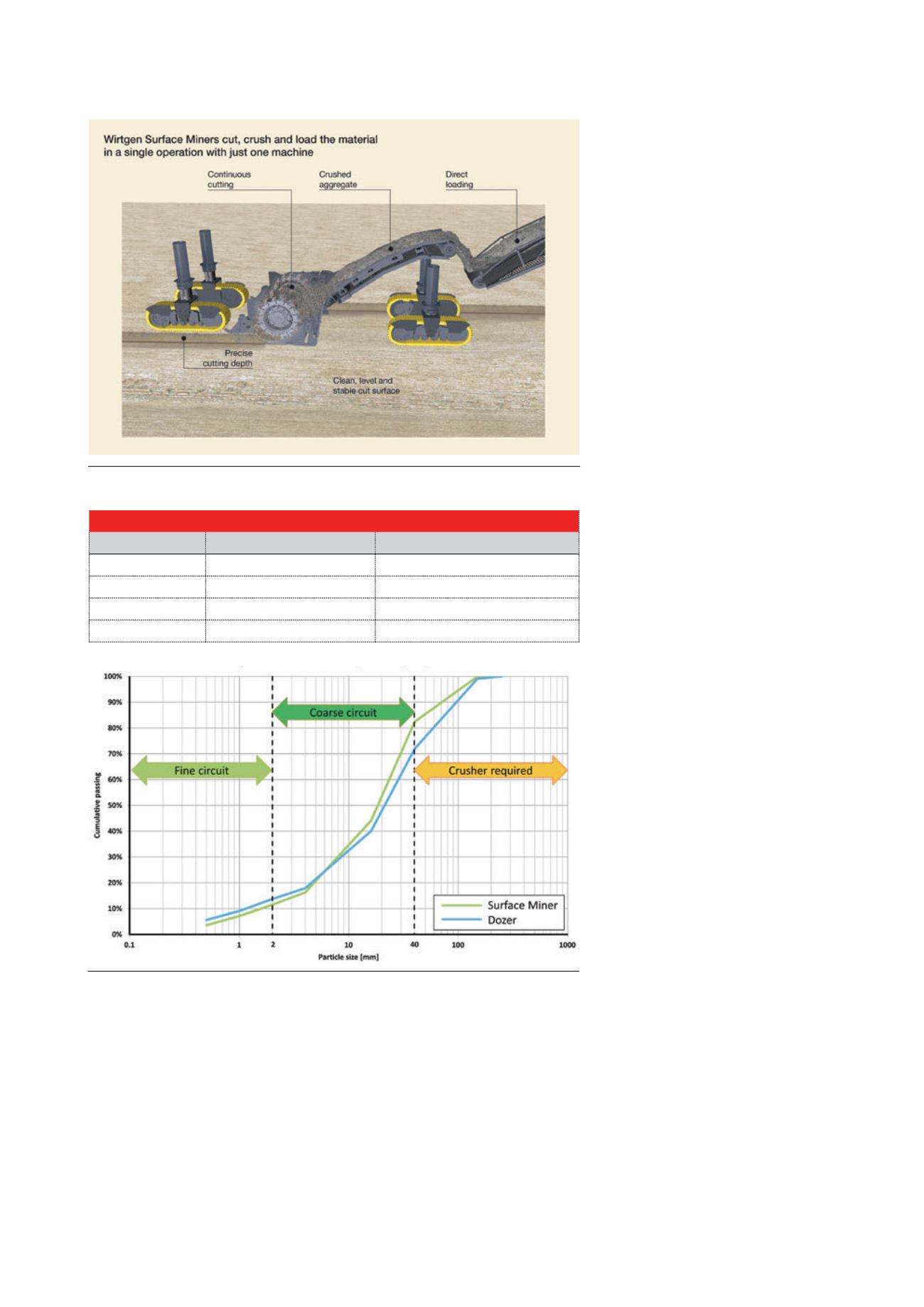
The Wirtgen surface miner mines
layer by individual layer down to
thezdesignated depth. The cutting
depth can vary according to the
seam thickness. Even thin seams –
just 10 cm thick – can be mined
and precisely separated from
the interburden layers above and
below it.
PSD field tests
In recent years, Wirtgen has
conducted several large-scale field
tests on particle size distribution and
material degradation. Coal and
sedimentary ore from eight different
pits were analysed to obtain their
particle size distribution. Almost
8000 t of material was screened to
compare the material produced by
Wirtgen surface miners and
conventional mining methods.
In one coal mine, Wirtgen surface
miners are operating alongside dozers
that employ the conventional
rip-and-stack method. In view of the
current coal prices, the mine was
optimising every step of the
operation. This included optimising
the process for target size material,
enabling most of the material to be
processed in the cheaper coarse circuit
of the processing plant. They also
were keen on reducing crushing costs.
Table 1 shows the plant’s feed size
requirements.
The test proved the suitability of
the surface miner for this kind of
operation once more: the machine
delivered coal with a lower fines level
and more target size material than the
conventional dozer rip-and-stack
method (Figure 2).
In fact, out of the 1500 tph of coal
delivered from the dozer to the
processing plant, 225 tph are fines
<2 mm. With the surface miner, it will
only be 185 tph. This means that 22%
less coal has to be washed in the fines
circuit and can be washed in the
cheaper coarse circuit. Looking at
material <1 mm, the plant processes
33% less fine material when working
with surface miner coal. This will also
result in more fines that have to be
processed.
The surface miner delivers more
than 70% target size coal (2 – 40 mm),
while the dozer ranges at less than
58%. Additionally, savings are
generated in the crushing stage: only
17% of the material coming from the
surface miner has to be crushed, as
opposed to more than 26% when
processing dozer coal.
Another trial location was a
sedimentary ore deposit that is mined
using surface miners and the
conventional drill-and-blast method.
There, the surface miner was able to
continually feed material with a
<1 mm fines level as low as 15% to the
processing plant. The normal plant
feed, which includes material of
drill-and-blast and surface miner
operation, contained 25% and more
fines <1 mm.
Figure 1. Operation method of a Wirtgen surface miner.
Figure 2. PSD of surface miner and dozer in coal and boundary values in the
processing plant.
Table 1. Processing of typical particle size ranges in coal
Particle size range Processed in
Rating
>40 mm
Primary/secondary crusher
Additional costs and fines generation
2 – 40 mm
Coarse circuit
Target size material, easy to process
0.075 – 2 mm
Fine circuit
More expensive to process
<0.075 mm
Loss
Undesirable
30
|
World Coal
|
March 2016


